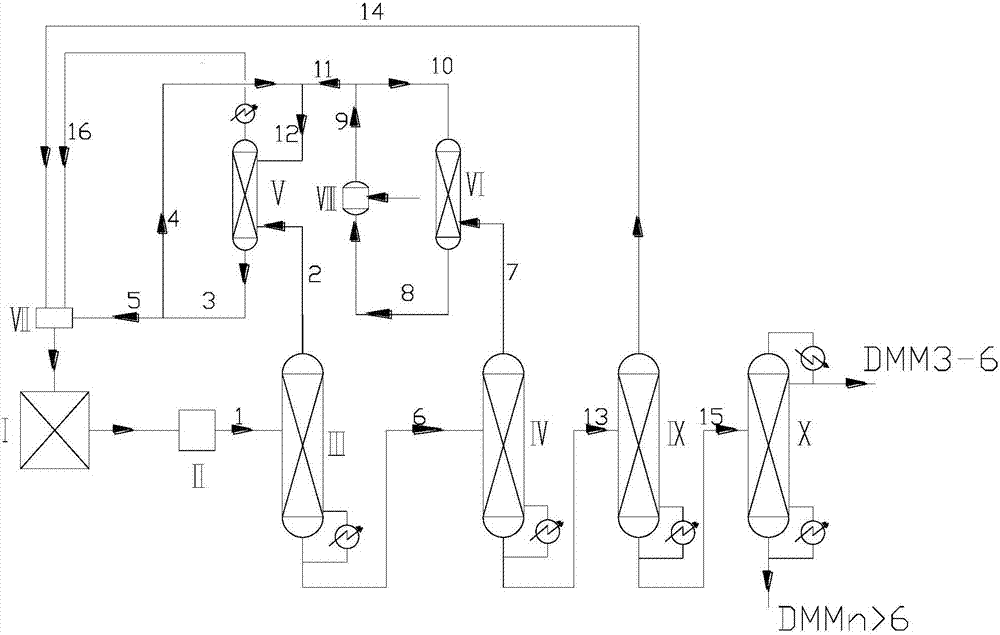Device and method for refining and separating polyoxymethylene dimethyl ether containing formaldehyde
A polymethoxydimethyl ether and formaldehyde technology, applied in chemical instruments and methods, preparation of organic compounds, organic chemistry and other directions, can solve the problems of formaldehyde polymerization clogging equipment, difficult continuous operation, etc., to solve the problem of formaldehyde polymerization, A wide range of applications, the effect of reducing consumption
- Summary
- Abstract
- Description
- Claims
- Application Information
AI Technical Summary
Problems solved by technology
Method used
Image
Examples
Embodiment Construction
[0036] Below in conjunction with accompanying drawing and specific embodiment, further illustrate the present invention, should be understood that these embodiments are only for illustrating the present invention, and are not intended to limit the scope of the present invention, after having read the present invention, those skilled in the art will understand the meaning of the present invention Modifications in various equivalent forms fall within the scope defined by the appended claims of the present application.
[0037] In the synthesis product of polyoxymethylene dimethyl ether, there will always be a certain amount of formaldehyde, and the gas phase material flow containing aldehyde is very prone to formaldehyde self-polymerization reaction to form paraformaldehyde solid adhesion in the normal pressure condensation process. The equipment and the inner wall of the pipeline block the pipeline, forcing the rectification process to be unable to continue. For materials with ...
PUM
 Login to View More
Login to View More Abstract
Description
Claims
Application Information
 Login to View More
Login to View More - R&D
- Intellectual Property
- Life Sciences
- Materials
- Tech Scout
- Unparalleled Data Quality
- Higher Quality Content
- 60% Fewer Hallucinations
Browse by: Latest US Patents, China's latest patents, Technical Efficacy Thesaurus, Application Domain, Technology Topic, Popular Technical Reports.
© 2025 PatSnap. All rights reserved.Legal|Privacy policy|Modern Slavery Act Transparency Statement|Sitemap|About US| Contact US: help@patsnap.com

